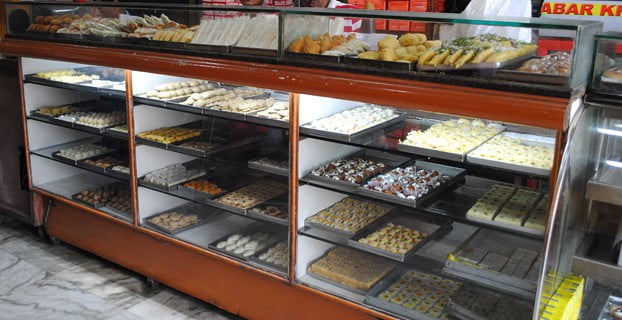Barcode
A barcode is a computer readable representation of information. Initially, barcodes stored data in the widths and spacing of printed parallel lines, but today they also come in patterns of dots, concentric circles, and text codes. Barcodes can be read by optical scanners called barcode readers or scanner. Barcodes are widely used to implement automatic data capture systems that improve the speed and accuracy of computer data entry.
Some common and widely used barcode symbology
UPC, UPC-A, UPC-E, EAN, EAN-8, EAN-13, Code 39, Code 93, Code 128, RSS-14, CODABAR, INTERLEAVED, DISCRETE
RFID
RFID is an abbreviated form of Radio Frequency IDentification, a technology similar in theory to bar code identification.
An RFID system may consist of several components: tags, tag readers, tag programming stations, circulation readers, sorting equipment, and tag inventory wands. Security can be handled in two ways. Security gates can query the ILS to determine its security status or the tag may contain a security bit which would be turned on and off by circulation or self-check reader stations.
The purpose of an RFID system is to enable data to be transmitted by a portable device, called a tag, which is read by an RFID reader and processed according to the needs of a particular application. The data transmitted by the tag may provide identification or location information, or specifics about the product tagged, such as price, color, date of purchase, etc.
RFID systems can be used just about anywhere, from apparels to accessories, cassettes and cd’s to food products — anywhere that a unique identification system is needed. The tag can carry information as simple as a unique number or complex information.
Usage of Bar code
Almost 95% of packed and packaged items purchased from a department or a grocery store carry a barcode on it. This helps a retailer for faster checkouts and tracking inventory placed in-store or warehouse. Both consumers and retailers have benefited from the usage of this technology. Recently, its usage has expanded to scanning electric or telephone bills, movie tickets and providing entries to sports arenas and temples. In large organizations, bar codes are often used to maintain office file system.
Usage of RFID
The use of RFID is not as wide-spread as bar code. Although, RFID is used
• as a security device for high-ticket (high-value) goods,
• to reduce inventory cost by having faster, real-time update of inventory flow, and
• to one day facilitate human-less store checkouts.
Differentiating barcode and RFID technologies
Theoretically, bar coding and RFID are quite similar; both are planned to provide rapid and reliable item identification-and-tracking capabilities. The primary difference between the two technologies is that bar coding scans a printed label with optical laser or imaging technology, while RFID scans, or interrogates, a tag using radio frequency signals. Because of the low cost of bar code labels, established standards, and global deployment, bar coding is a widely accepted, mature technology, while, in the past, RFID had been limited to niche applications. Furthermore, just as there are different bar code symbologies in use today, there are different RFID standards for RF communications protocols.
Further, RFID tags are often envisioned as a replacement for UPC or EAN bar-codes, having a number of important advantages over the older bar-code technology. RFID codes are long enough that every RFID tag may have a unique code, while current UPC codes are limited to a single code for all instances of a particular product. The uniqueness of RFID tags means that a product may be individually tracked as it moves from location to location, finally ending up in the consumer’s hands.
It will be partial to name one, as bar code and RFID technologies are not mutually exclusive, nor will one replace the other. They are two different technologies with two different cost profiles and application usage. They are both enabling technologies with different physical attributes. Bar codes utilize one-way, serialized, and periodic data. RFID utilizes two-way, parallel, and real-time data.
In recent times, awareness for both the technologies has grown to a huge extent. Almost all the major retailers of Class A and Class B cities have implemented these solutions as core component of their business. To generate maximum output from limited resources, one has to think out-of-the-box. The use of these technologies is increasing like a rapid fire. The scope of these systems is huge and increasing day-by-day to support retail industry.



